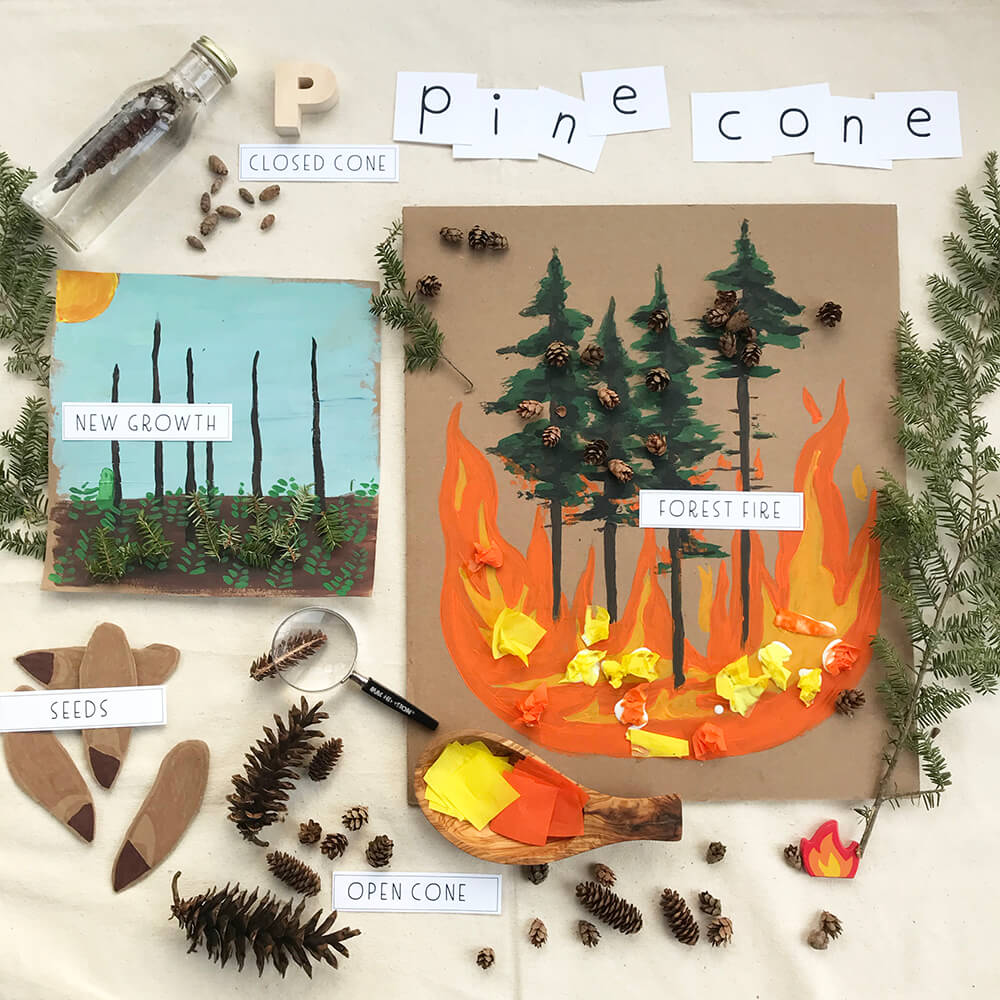
PINECONE DISCOVERY
PROJECT FOR KIDS
March 11th, 2021
Whether you find yourself looking for inspiration while sheltering-at-home with young children or creative new ways to encourage kids of all ages to ditch the screens and have some fun outdoors, guest blogger Tracy Jones has tips and tricks galore. Her easy-to-implement activities are chock-full of fun facts that encourage kids and adults to learn about, and appreciate, the natural world. We’re excited to partner with Tracy to bring you monthly discovery projects to try at-home with the kiddos. Enjoy!


It’s chilly here in New Hampshire. Since the seasons have changed from fall to winter, the focus of the daily nature walks I take with my two small children has shifted and three-year old AJ has become obsessed with... pinecones! On our last excursion, AJ collected tiny hemlock pinecones from our yard, some medium-sized pinecones from a neighbor’s yard, and giant sappy cones from the tall pines at the park.
We did some research about pinecones and AJ was amazed to learn that certain cones, such as those of the lodgepole pine, require extreme heat to open and release their seeds. These cones are tightly sealed with resin and woody tissue, keeping their precious seeds safe inside for years until an environmental trigger like a wildfire causes them to open. The term for this is ‘serotinous.’ Serotinous cones evolved to use periodic forest fires to their advantage. Carbon-rich soils and increased access to sunlight are perfect for tiny seedlings to take root and regrow the forest!
Although lodgepole pines aren’t native here in the northeast, we used our local pinecones to make a few general observations, play some games, and get creative. Here are some fun activities to try with your kiddos at-home:

- Wet vs. Dry - Observe the difference between pinecones that have been exposed to water and those found in dry, sunny spots. We found tiny, closed hemlock cones in a muddy puddle and compared them to a batch of open cones sitting in the sunshine. What do you notice? Which ones are more open and which are more tightly closed?
- Bring on the Heat - To test the serotinous cone fire adaptation, lightly bake a batch of closed cones in the oven at 200 degrees Fahrenheit for about 30 minutes (for sappy cones you may want to bake them longer to be sure the sap solidifies before playing with them). What do you notice? Ours dried out quickly and opened up like popcorn! When we took them out, the tray was covered with little pine seed “wings” that had been released in the drying process.
- Get Crafty - To help illustrate the cycle of the serotinous cone, I made some paintings on recycled cardboard. On the forest fire painting, AJ crumpled up little squares of yellow and orange tissue paper, dipped them in school glue, and stuck them down to make the fire “roar.” Then, she “planted” evergreen sprigs that we had collected on our nature walk by gluing them to the paper to help the forest grow after the fire.
- Go For It! - AJ’s favorite part of the project was crushing and pulling apart the pinecones. Full disclosure: At first, it drove me a little nuts, but it wasn’t causing any harm so I said “Go for it!”. It worked out perfectly because she used the loose pinecone scales to fill in the letter “P” on the “P is for Pinecone” worksheet I made for her.
- Introduce Early Literacy - We talked about the beginning sound of the letter “P” and she used a paintbrush to sweep scales into the letter “P” shape. This is a great way to combine early literacy practice with fine motor development.
Pinecones are just about everywhere, so get out there with even the littlest outdoor adventurers and collect some for your next project! And don’t forget to download the free printable resource pack available here.
About the Author
Tracy Jones is a creative, outdoorsy mama to two energetic daughters living in southern New Hampshire. She is currently homeschooling her pre-K aged daughter and spends her days exploring nature, doing play-based projects that inspire curiosity, creativity, and independence. Tracy has bicycled across the US twice and runs a vintage clothing shop on Etsy. She and her husband and two children live in a 100-year-old fixer-upper which they are lovingly bringing back to life. You can learn more about Tracy’s creative projects for kids on Instagram.















